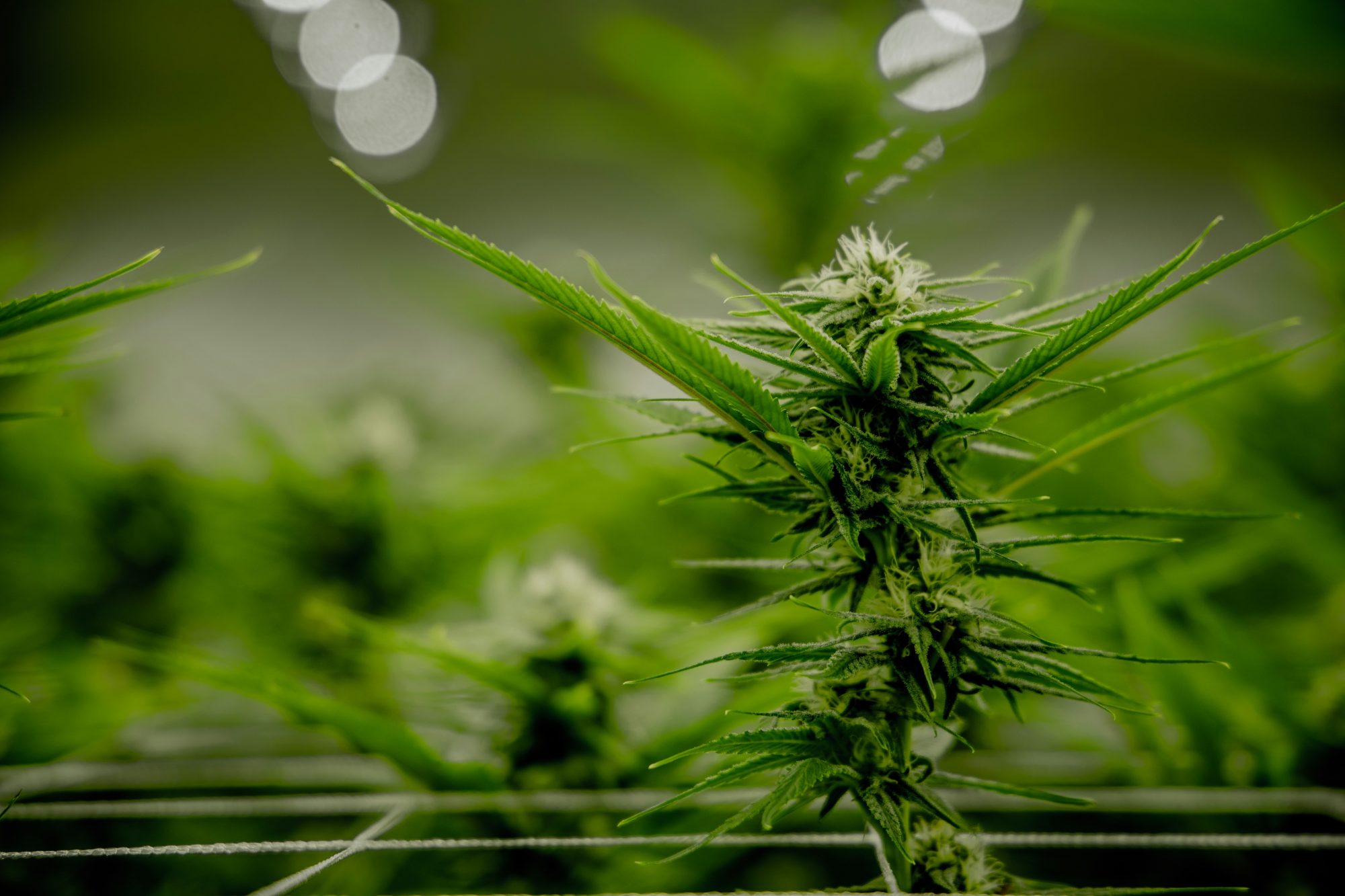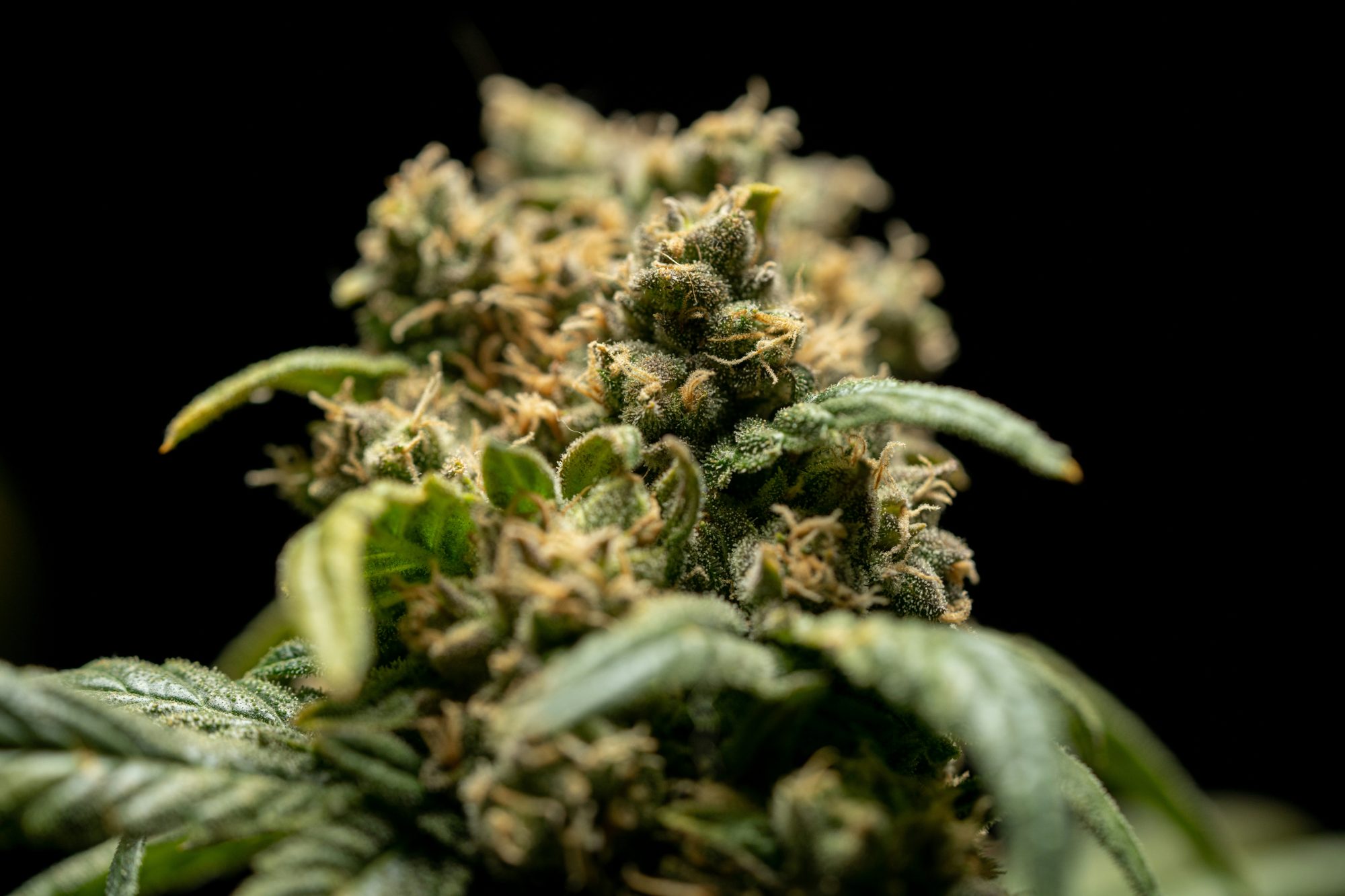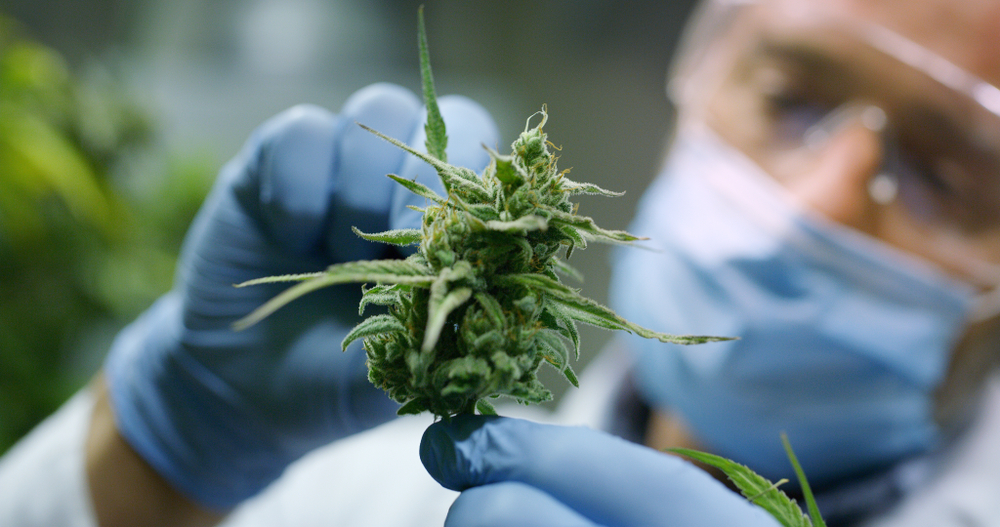Cultivating a cannabis garden efficiently in terms of time and space? Discover the recommended steps of cannabis cloning with GrowerIQ.
Imagine recreating your best cannabis strains with precision and consistency, this is the power of cannabis cloning. By duplicating the genetics of a top-performing plant, you can produce uniform crops that retain desirable traits like potency, flavor, and yield. This step-by-step guide will walk you through the process from selecting a mother plant to successful transplantation, essential knowledge for building a strong, streamlined Cultivation Operations Plan.
How to Clone Cannabis in 5 Steps

Step 1: Choosing the Perfect “Mother” Plant for Cloning
When it comes to cloning cannabis plants, it all starts with choosing the right “mother” plant. Look for mature cannabis plants with alternating leaves, indicating that they are ready to clone. These plants should have new branching and a new top. Cut a little bit below the new growth, firmly grabbing the branch and cutting it away at a 45-degree angle.
The cuttings should be 5-8 inches (10-20 cm) long. Opt for vigorous growth tips from the lower half of the plant, as they have more rooting hormones and will grow roots faster. Clones taken from any part of the plant will work as long as they have a nice growth tip at the end.
Step 2: Caring for the New Cannabis Stem
Once you have chosen the perfect stem for cloning, it’s important to clean and care for it properly. Placing the stem in a glass of water will help prevent bubbles from getting into the stem. Trim off any large lower leaves or node points from the cutting, and clip the top fan leaves if they are big. Clipping the leaves will prevent the clone from focusing on converting light into food when it should be focusing on root growth.
Step 3: Rooting the New Stem
Rooting the new cannabis stem is an essential step in the cloning process. You can choose to root your cuttings using plain water, or you can use rooting hormones and other cloning products to speed up the process. If you decide to dip your cuttings, immediately dip the freshly cut stem into rooting hormone powder or gel to seal off air bubbles and promote root development.
Some growers use both gel and powder to ensure the best results. Make sure to coat the entire bottom of the cutting with the rooting hormone. Place the new clone into a moistened starter cube, ensuring a secure seal to prevent air from reaching the rooting area.
Step 4: Nurturing Your Clone
Once the clone is rooted, it needs to be nurtured properly to ensure successful growth. Since the clone doesn’t have roots yet, it relies on water absorption through its leaves. A humid cloner or misting the plants a few times a day can provide the necessary humidity. Maintaining a temperature of 72-77 °F (22-25 °C) is ideal for clone development.
Some growers prefer not to use grow lights during the first 1-2 days, while others provide a low-intensity light source like a CFL bulb. It is important to provide an 18/6 (Light/Dark) light cycle for your new clones, avoiding 24 hours of continuous light, which can slow down the rooting process. Keep a close eye on your new clones until they are well-established.
Step 5: Transitioning Your Clones into Cannabis Plants
Once your clones have developed into mini-plants, it’s time to move them into the appropriate growing room or area. Monitor their growth closely and provide the ideal growing conditions to help them thrive. This includes maintaining proper lighting, temperature, humidity, and nutrient levels. By closely observing and nurturing your clones, you can ensure that they blossom into healthy and productive cannabis plants.
Related Reading
- Marijuana Grow System
- Cannabis Climate Control
- When To Transplant Cannabis
- Perpetual Harvest
- Cannabis Industry Statistics 2024
- Cannabis Grow Room
- Cannabis Mother Plant
Is Cannabis Cloning Worth It?

Save Time and Skip Germination
One of the most compelling benefits of cannabis cloning is how much time it saves. Unlike growing from seed, which requires germination and seedling stages that can take weeks, cloning allows you to bypass these early growth phases entirely. By starting with cuttings from an already mature, healthy plant, you can accelerate your cultivation timeline and get plants into production much faster—ideal for maximizing grow cycles and harvest frequency.
Guaranteed Female Plants
Another advantage of cannabis cloning is that you can guarantee the gender of your plants. Cuttings taken from a female mother cannabis plant are guaranteed to produce another female plant. This is crucial for those who want to focus on cultivating female plants for their flowers or buds, as male plants do not produce the same desired results. By cloning, you can eliminate the risk of ending up with male plants and can ensure a higher quality yield.
Preserve Desirable Traits
Clones carry over all the desirable traits from their mother plants. This means that when you clone a plant, you are essentially creating an exact copy of the mother plant, including its taste, size, appearance, and productivity. This is particularly advantageous when you have a strain or plant that you really love and want to replicate. By cloning, you can preserve those desirable traits and consistently produce high-quality plants with the same characteristics.
Faster and More Efficient
Cloning is a faster and more efficient method of cannabis cultivation compared to growing from seeds. With cloning, you can skip the time-consuming process of germination and focus on root development and transplanting. This allows you to have a head start in the cultivation process and can lead to faster growth and earlier harvests. Since you are cloning plants that have already proven to be successful, you can eliminate the uncertainty and potential variability that comes with growing from seeds. This can result in a more consistent and reliable cultivation process.
Streamlining Cannabis Cultivation with GrowerIQ’s Cultivation Software
GrowerIQ’s cannabis cultivation software is a game-changer for cannabis cultivators, providing a simple-to-use system that perfectly aligns with the reality of cultivation operations. By seamlessly integrating all aspects of cultivation into one platform, GrowerIQ streamlines the entire process, making it more efficient and easier to manage.
Does Cloning Ruin Cannabis?
Cannabis cloning is a popular practice among cultivators for its ability to produce replica plants with desirable traits. There are several potential disadvantages to consider when it comes to cannabis cloning. We will explore these drawbacks and discuss how cultivators can mitigate the associated risks.

1. Reduced Genetic Diversity
One of the potential drawbacks of cannabis cloning is the reduced genetic diversity within the crop. Cloning involves reproducing plants from a single mother plant, resulting in identical genetic makeup for all the clones. While this can be advantageous for maintaining desirable traits, it can also have negative consequences.
Genetic Diversity in Crop Health
When there is limited genetic diversity within a crop, the plants become more susceptible to diseases, pests, and environmental stressors. Without the introduction of new genetic material, the plants lack the ability to adapt and respond effectively to changing conditions. This can lead to decreased resilience and overall health of the crop.
Introducing New Genetics
To mitigate this risk, cultivators can periodically introduce new genetics into their cultivation program. By obtaining new strains from reputable seed banks, cultivators can refresh their stock and enhance genetic diversity within their clones. This practice helps to maintain a robust and adaptable crop.
2. Increased Susceptibility to Diseases
Since all clones originate from the same genetic material, there is an increased risk of diseases spreading throughout the entire crop if the mother plant becomes infected. If the mother plant harbors a disease or pest, it is highly likely that the clones will also be affected. This can result in widespread issues within the cultivation facility and potentially lead to the loss of the entire harvest.
To mitigate the risk of disease spread, proper sanitation and hygiene practices are essential in a cloning environment. Regular cleaning and disinfection of tools, equipment, and growing surfaces help prevent the transfer of pathogens. Implementing a strict quarantine protocol for new plant material can further reduce the risk of introducing diseases into the cultivation facility.
3. Accumulation of Genetic Mutations
Over time, clones can accumulate genetic mutations, leading to variations from the original mother plant. These mutations can result in undesirable traits or changes in cannabinoid and terpene profiles, affecting the overall quality and consistency of the crop.
To mitigate the risk of genetic mutations, cultivators should regularly refresh their stock with new genetics. Obtaining new strains from reputable seed banks ensures that cultivators have access to healthy and stable genetic material. By periodically introducing new genetics, cultivators can maintain a diverse and resilient crop.
Pro Tip for Cannabis Cultivators
Seed to sale software is a powerful tool that enables cannabis cultivators to efficiently monitor their cannabis plants at all stages, from seed to sale. By integrating all aspects of cultivation operations into one centralized platform, cultivators can streamline their processes, improve productivity, and ensure compliance with regulations.

Did you know? GrowerIQ has an industry-leading Seed-to-Sale Cannabis Software (with quality management built in) that is designed to uncomplicate cannabis production for cannabis producers throughout the world.
Related Reading
- Cannabis Enterprise Resource Planning
- Cannabis Compliance
- Indoor Grow Room Supplies List
- Cannabis Industry Statistics 2024
- Marijuana Growing Equipment
- Cannabis Product Development
- How To Clean A Grow Tent
How Long Do Cannabis Clones Take to Start Growing?
When it comes to cannabis cultivation, cloning is a popular technique used by growers to produce genetically identical plants. By taking cuttings from a healthy “mother plant” and encouraging them to develop roots, growers can create new plants with the exact same characteristics. This allows for consistent quality and traits in the final product.
The process of cannabis cloning involves several stages, and one of the key milestones is the formation of white roots. Let’s explore how this happens and what it means for the successful development of the clones.

1. Selection of Healthy Mother Plants
To begin the cloning process, it is essential to choose healthy mother plants that exhibit the desired characteristics. These plants should be free from diseases, pests, and deficiencies. Selecting mother plants that are in the vegetative stage, rather than flowering, can improve the success rate of cloning.
2. Taking Clones
Once the mother plant has been selected, growers carefully take cuttings from the plant’s lower branches. These cuttings should be around 4-6 inches in length and include at least two sets of leaves. It’s important to make clean, diagonal cuts to promote root development.
3. Rooting Hormone Treatment
To stimulate root growth, many growers use rooting hormone solutions. These solutions contain plant hormones, such as auxins, that encourage the development of roots. By dipping the cut end of the clone into the rooting hormone solution, growers can enhance the chances of successful rooting.
4. Proper Environmental Conditions
After the clones have been treated with rooting hormone, they should be placed in an environment that promotes root formation. This typically involves placing the clones in a rooting medium, such as rockwool cubes or peat pellets, which provide stability and moisture. Maintaining a humid environment and providing adequate lighting are also crucial for successful rooting.
5. Root Development
Within 14 to 21 days, under the right conditions, white roots should start to emerge from the base of the clone. These roots will gradually grow longer and become more pronounced. It’s important to note that the timing may vary depending on the strain and environmental conditions.
6. Transplanting
Once the roots are well-established and the clones have resumed growth, it is time to transplant them into their final growing medium. This could be soil, coco coir, or a hydroponic system, depending on the grower’s preference and setup. Transplanting at the right time ensures that the clones can continue their growth without any stress or setbacks.
What is the Best Method for Cloning Cannabis?
Cannabis cloning plays a vital role in cultivation by enabling growers to produce genetically identical plants from a single, proven mother plant. This ensures consistent results in cannabinoid profiles, growth patterns, and yields across each crop cycle. Many professional cultivators now rely on auto-cloners—automated machines that streamline the cloning process using aeroponics—to increase success rates, enhance productivity, and maintain uniform quality across large-scale operations.

1. Enhanced Rooting with Aeroponics Technology
Auto-cloners utilize the cutting-edge technique of aeroponics to promote rapid and robust root growth in cannabis cuttings. Aeroponics involves suspending the plant cuttings in a chamber where they receive a fine mist of nutrient-rich water at regular intervals.
This mist provides the necessary moisture and nutrients directly to the cuttings’ stems, facilitating the development of strong and healthy roots. By automating this process, cultivators can ensure consistent and optimal conditions for root growth, resulting in higher success rates for clone rooting.
2. Reduced Labor and Time Investment
Traditionally, cloning requires meticulous attention and care to ensure the cuttings receive the right amount of moisture, nutrients, and light. This can be a time-consuming and labor-intensive task, especially when dealing with a large number of clones. Auto-cloners alleviate this burden by automating the entire process.
Cultivators simply need to set the desired interval for nutrient spraying and let the machine handle the rest. This frees up valuable time and resources, allowing cultivators to focus on other essential aspects of their operations, such as cultivation, harvesting, and quality control.
3. Consistency and Standardization
Consistency is crucial in cannabis cultivation, especially when it comes to maintaining the desired genetic traits and overall crop quality. Auto-cloners ensure uniformity in the cloning process by providing consistent environmental conditions for each cutting.
The automated nutrient spraying and careful control of factors such as temperature and humidity help eliminate variations and increase the likelihood of successful rooting. This level of standardization is particularly valuable for commercial cultivators who aim to produce consistent and reliable crops.
4. Cost Savings in the Long Run
While there is an initial investment in purchasing an auto-cloner, its long-term benefits outweigh the costs for professional cultivators who regularly clone cannabis. By reducing labor and streamlining the cloning process, auto-cloners enable cultivators to clone larger quantities of plants with minimal effort.
This translates into increased production capacity and the potential for higher yields. The improved success rates in rooting minimize the number of failed clones, saving both time and resources.
How GrowerIQ Enables Cannabis Cultivation
In the fast-growing cannabis industry, Cannabis Cloning and other cultivation techniques present many challenges that operators face, ranging from compliance management to quality control. GrowerIQ’s software is a game-changer for cannabis operators as it provides a comprehensive solution to address these challenges. By combining compliance, cultivation, manufacturing, quality management system, and CRM in one easy-to-use platform, GrowerIQ’s software uncomplicates cannabis cultivation.

Discover how GrowerIQ’s seed-to-sale software can help you set up all of the administrative components of a successful cannabis cultivation operation, without any hassle. Questions we haven’t covered? Please reach out and let us know. GrowerIQ serves clients coast to coast, and we’re ready to help your team today.
Streamline Cannabis CultivationRecommended For You
Unlock the Secret to Thriving Greenery: Discover the Best Organic Fertilizer for Seedlings Today!
December 30, 2025Cannabis Conventions: Where Innovation Meets Culture in the Heart of the Green Revolution
December 29, 2025Unlocking Secrets to Transforming Hermaphroditic Cannabis Plants into Growing Goldmines
December 26, 2025About GrowerIQ
GrowerIQ is changing the way producers use software - transforming a regulatory requirement into a robust platform to learn, analyze, and improve performance.
To find out more about GrowerIQ and how we can help, fill out the form to the right, start a chat, or contact us.

